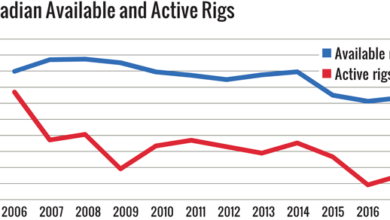Guest Editorial: Texas oil, gas production disrupting global energy landscape, requires new mindset

Earlier this year, Hurricane Harvey left more than a million people in Texas and Louisiana without homes. The devastation of this storm was more far-reaching than anyone imagined. My neighborhood in southeast Houston received more than 56 inches of rain. Although the hurricane has passed, my thoughts and prayers are still with all those working to rebuild their lives.
At one point, Hurricane Harvey effectively shuttered 24% of the nation’s refining capacity, and as much as 10% of US drilling was expected to be delayed. Pipeline infrastructure, including the Magellan, Explorer and Colonial pipelines, were taken offline. Power outages affected natural gas liquid (NGL) fractionating plants. The Gulf of Mexico’s share of US production was cut from above 25% to below 5%. The Port of Corpus Christi, the nation’s No. 1 crude oil export port, closed for six days. These impacts left the nation with another point of concern — how would Texas, the US and the world meet energy needs?
Both government and industry worked quickly to fill energy demand and bring infrastructure back online, but the effect on the global market, while not devastating, was undeniable. Gasoline futures rose nearly 7%, and the dollar weakened to a 16-month low. The idea that one state could impact the world in such a way makes it clear – Texas’ natural resources are the key to America’s energy security.
Our current federal administration has emphasized that an all-of-the-above strategy is paramount to the continued success of American energy. Every nation wants clean, affordable and reliable energy sources, but until now, producing that has been a challenge. Where some countries are rich with natural resources, they lack infrastructure and refining facilities. Where others have natural resources and infrastructure, they lack an experienced workforce.
In Texas, we have the natural resources, pipelines, ports, workforce and regulatory environment that allow us to produce energy cleaner and more efficiently than anyone else. These components, paired with our all-of-the-above energy portfolio, have made Texas the leading net exporter of energy in the US.
Further, the state produces 41% more energy than it consumes. Let’s put that into perspective.
While fossil fuels dominate Texas energy production, renewables account for a significant portion of our electricity grid. In Q1 2017, wind generation accounted for nearly 23% of power generation for the Electric Reliability Council of Texas (ERCOT). ERCOT also projects that solar power could contribute up to 28,100 megawatts to the grid within 10 to 15 years. Two nuclear plants supply one-tenth of the state’s net electricity generation.
Texas produces more than a third of the country’s crude oil, and with untapped reserves in the Alpine High, Permian Basin and Eagle Ford, our production continues to grow. The state is also home to 15 coal-fired power plants and is the seventh-largest coal producer in the nation. Natural gas arguably has the most potential, and the country receives more than one-fourth of this resource from Texas.
As the US exponentially grows its production of clean and reliable energy like natural gas – which surpassed coal as a power source for the first time in 2016 – we are also significantly reducing emissions and providing clean energy to our allies overseas. The US decreased emissions by 15% between 2005 and 2016, not because of the Paris Accord or Clean Power Plan but because of technological advancements from the industry, like hydraulic fracturing. Hydraulic fracturing in the US has created thousands of jobs, enhanced our economic and national security, and reduced emissions from electric-generation facilities.
This technique has allowed producers to unlock shale plays and develop abundant natural gas reserves, which are now being shipped from our ports to more than 20 countries around the world, like China, Pakistan and India.
Take, for example, Mexico’s reliance on American natural gas. Right now, Mexico imports about 112,000 million cu ft of natural gas each month from Texas via pipeline. By 2019, US natural gas exports to Mexico will double, and that means more money for our schools, roads, hospitals and economy. Mexico’s energy reforms and demand, coupled with near historic highs in US production, are creating an enormous opportunity from which both countries will benefit.
Liquefied natural gas (LNG) is also creating economic opportunities for Texas and the nation. The US Energy Information Administration predicts US LNG exports will increase from 1.4 Bcf/day at the end of 2016 to 9.5 Bcf/day by the end of 2019. With this growth, economists are predicting the US will be a global leader in energy exports by 2022.
Prior to the shale boom in 2008, the United States believed it did not have enough natural gas to meet its demand. Import facilities were built to take in natural gas from other countries.
But now we need to begin thinking differently about the role energy plays in the world. Texas natural gas production, the innovation of our drillers and refined products exports are disrupting the global market, securing our economic growth and national security, and placing the US in a position of energy dominance. DC





